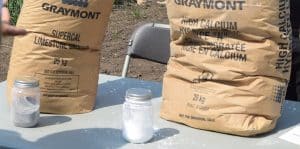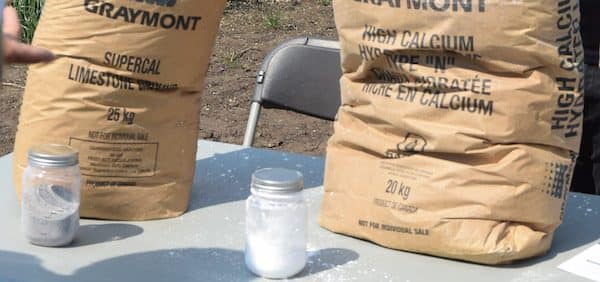If identified early enough and small enough, patches of soil infested with clubroot-causing Plasmodiophora brassicae can be managed in various ways to reduce the spore load in those patches and prevent clubroot from spreading beyond that patch.
This excerpt from a Canola Digest article describes patch management techniques:
Rogue. If the patch is small enough, pull up all the plants that have galls. Then cut off the galls and burn them. This is an immediate and effective way to destroy those galls.

Lime. Increasing soil pH in areas with clubroot can reduce clubroot severity. Brassica vegetable growers around the world have been using lime for decades for this purpose. The increase in pH (on acidic soils) could have the added bonus of increasing availability of key nutrients, although the amount of lime (and pH boost) required to provide the nutrient benefit could be quite a bit less than the amount required to reduce the clubroot risk.
New research projects will give farmers and agronomists more detail on best lime sources, appropriate application rates and timing, and possible limitations of lime to bring very low pH soils up to a low-risk level. On this last point, lime might not be able to push past a soil’s “buffer pH” unless applied rates are very high. As it is, it can take a few tonnes of lime per acre to move soil up just one pH point.
Nicole Fox, Master’s student in plant pathology at the University of Alberta, leads one of the lime research projects. “Low pH, clubroot-infested soil treated with hydrated lime significantly reduced the number and size of galls on the susceptible canola roots,” Fox says, adding, “Liming can reduce the selection pressure on the current resistant cultivars planted, as well as decreasing the amount of spores reproducing in susceptible volunteer canola and even crucifer weed species present in the field throughout the crop rotations. However, types of lime, application style and timing will still need more research.”
Targeting small early-identified patches is preferred because trucking the required rates can be expensive. When considering a lime source, look for a high concentration of calcium carbonate (CaCO3) or hydrated lime (Ca(OH)2) per tonne and consider purity of the source. Large-grit lime could take years to be fully effective but it is much easier to handle and apply. Powdered lime acts fast but is hard to handle and spread in large volumes. On application style, lime is often roto-tilled into the soil in research plots, but this tillage will add to the spread of clubroot. Farmers need reduced-tillage or surface-applied liming techniques that work.
Reduce tillage. Because a single gall can produce millions (or billions) of spores and the decomposing gall will release the spores into the surrounding soil, tillage will disperse the spores to a larger area than if the soil is left undisturbed. Dan Orchard, Canola Council of Canada agronomy specialist in central Alberta, says many of the heavily infested fields in his area “have been exposed to aggressive tillage”.
Grass. Seed the patch to a non-host grass such as perennial ryegrass that can fill in quickly and tie up the soil to prevent wind and water erosion. While the patch is in place, farmers will need to control host weeds, which include volunteer canola, flixweed, shepherd’s purse, stinkweed and mustard. Leave the patch undisturbed until soil surveys indicate spore levels are very low or zero.
Fumigation (or solarization). Mary Ruth McDonald, clubroot researcher at the University of Guelph, has had success reducing clubroot spore counts in small patches by fumigating the soil (with Vapam) and then covering the patch with film. Interestingly, the film covering may actually work on its own, McDonald observed. The film captures heat, creating a hot zone that seems to kill clubroot resting spores. Note that fumigation is quite costly for large-scale application.
Fungicide. At the International Clubroot Workshop, Japanese researcher Kenji Wakayama explained how farmers in his country use fungicide to manage clubroot, but Wakayama says it would not be economical in large fields. Sheau-Fang Hwang, clubroot researcher with Alberta Agriculture, led some work looking at fungicides applied in the soil and as a seed treatment. Hwang’s study concluded that seed treatments “will not work” on existing infestations and the only soil-applied product that actually reduced clubroot required rates too high to be safe and too expensive to be practical. Plus the product is no longer available in Canada.
For any patch management technique to be effective, patches need to be small and clubroot has to be identified very early. By the time plants are showing symptoms, the whole field could be infested to the point where patch management no longer works.
Further reading:
Read the whole Canola Digest article on the International Clubroot Workshop.
Canola Encyclopedia section on clubroot management

